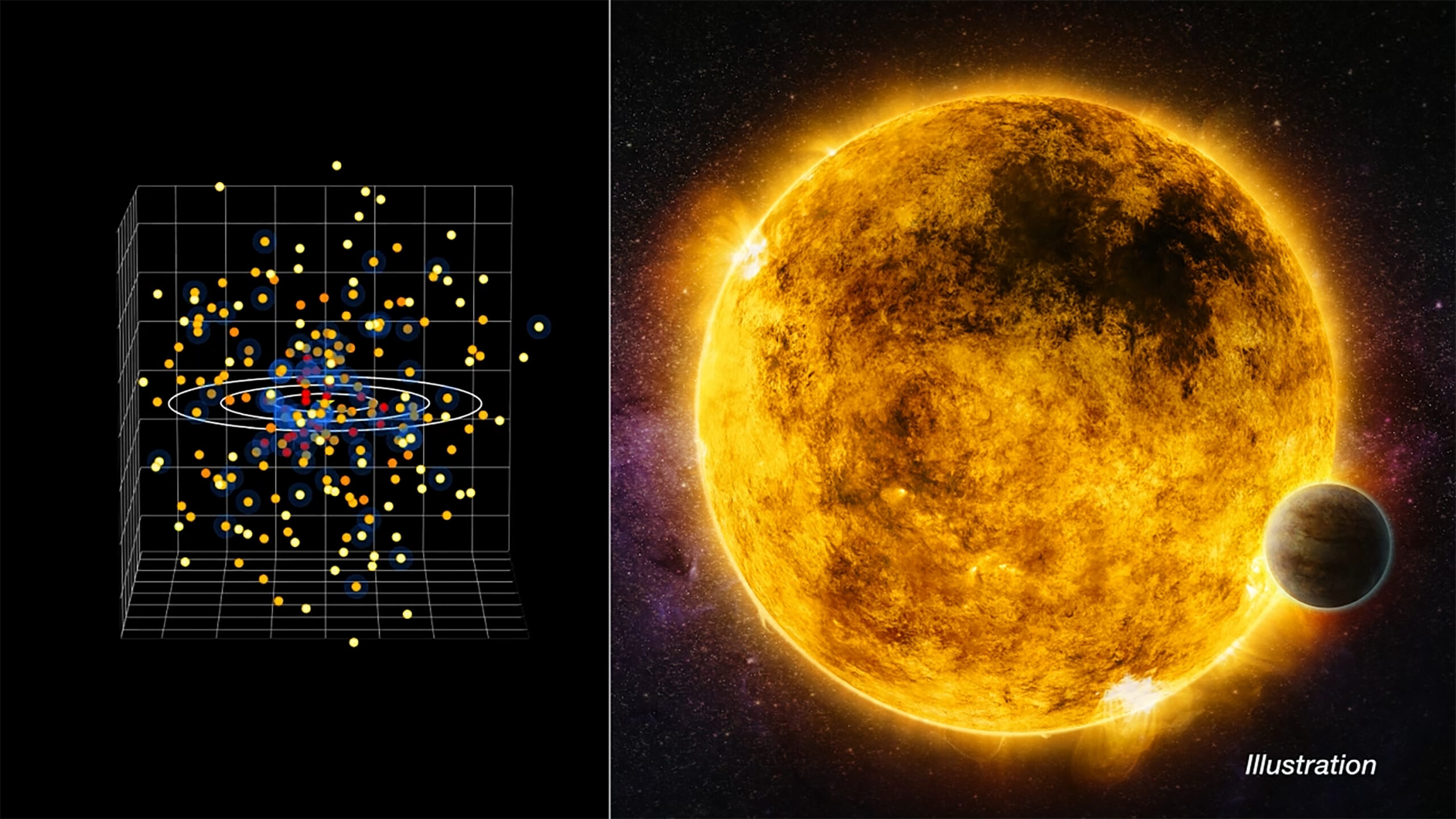This image shows a three-dimensional map of stars near the Sun. These stars are so close that they could be prime targets for direct searches for planets using future telescopes. The blue halos represent stars observed with NASA’s Chandra X-ray Observatory and ESA’s XMM-Newton. The yellow star in the center of this diagram represents the position of the sun. The concentric rings show distances of 5, 10 and 15 parsecs (one parsec corresponds to about 3.2 light years).
Astronomers use this X-ray data to determine how habitable exoplanets may be, based on whether they receive lethal radiation from the stars they orbit, as described in our latest press release. This type of research will help guide observations with the next generation of telescopes, which will provide the first images of planets like Earth.
Researchers examined stars so close to Earth that telescopes will become operational in the next decade or two — including the Habitable Worlds Observatory in space and Extremely Large Telescopes on the ground — and could capture images of planets in the so-called habitable stars of the stars. zones. This term defines orbits where the planets can have liquid water on their surfaces.
There are several factors that influence what might make a planet suitable for life as we know it. One of those factors is the amount of harmful X-rays and ultraviolet light they receive, which can damage or even wipe out the planet’s atmosphere.
Based on X-ray observations of some of these stars using data from Chandra and XMM-Newton, the research team investigated which stars might have hospitable conditions on orbiting planets for life to form and flourish. They studied how bright the stars are in X-rays, how energetic the X-rays are, and how much and how quickly the X-rays change, for example as a result of solar flares. Brighter and more energetic X-rays can do more damage to the atmospheres of orbiting planets.
The researchers used nearly ten days of Chandra observations and about 26 days of XMM observations, available in archives, to investigate the X-ray behavior of 57 nearby stars, some with known planets. Most of these are giant planets such as Jupiter, Saturn or Neptune, while only a handful of planets or planet candidates may be less than about twice as massive as Earth.
These results were presented at the 244th American Astronomical Society meeting in Madison, Wisconsin, by Breanna Binder (California State Polytechnic University at Pomona).
NASA’s Marshall Space Flight Center manages the Chandra program. The Smithsonian Astrophysical Observatory’s Chandra X-ray Center monitors science from Cambridge, Massachusetts and flight operations from Burlington, Massachusetts.
Read more from NASA’s Chandra X-ray Observatory.
For more Chandra images, multimedia and related materials, visit:
Visual description:
This video shows a three-dimensional map of stars near the Sun on the left side of our screen and a dramatic illustration of a star with a planet around it on the right.
The star map on the left shows many circular dots of different colors floating in an illustrated three-sided box. Each wall of the box is constructed in a grid pattern, with straight lines running horizontally and vertically like chicken wire. Blue colored dots represent stars observed with NASA’s Chandra and ESA’s XMM-Newton.
About halfway up the box hangs a series of three concentric circles around a central dot indicating the position of our sun. The circles represent distances of 5, 10 and 15 parsecs. One parsec is equivalent to approximately 3.2 light years.
In the animation, the dot-filled chicken wire box slowly rotates, first on the X-axis and then on the Y-axis, creating a three-dimensional exploration of the plotted stars.
Megan Watzke
Chandra X-ray Center
Cambridge, Mass.
617-496-7998
Jonathan Deal
Marshall Space Flight Center
Huntsville, Ala.
256-544-0034
